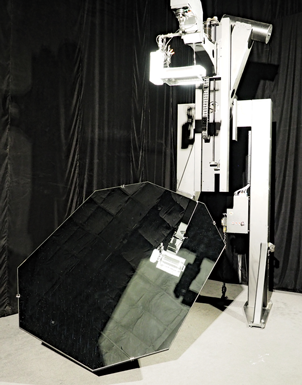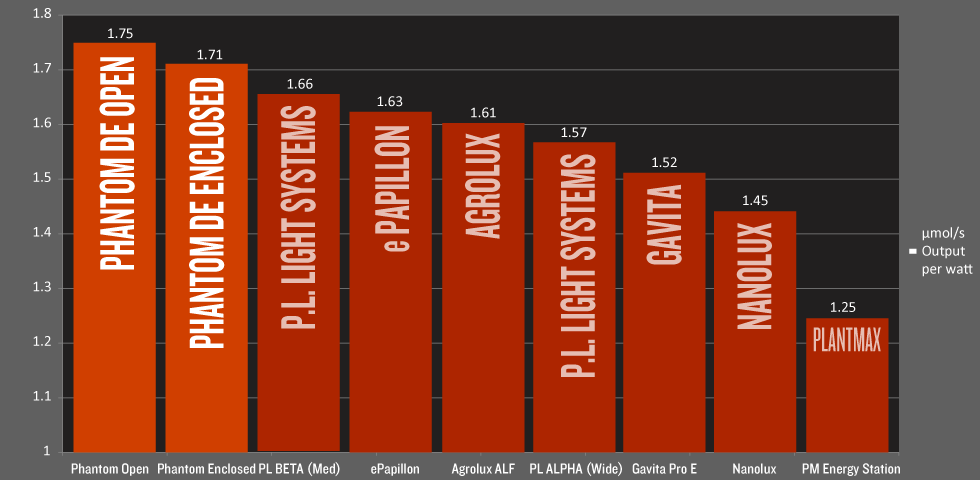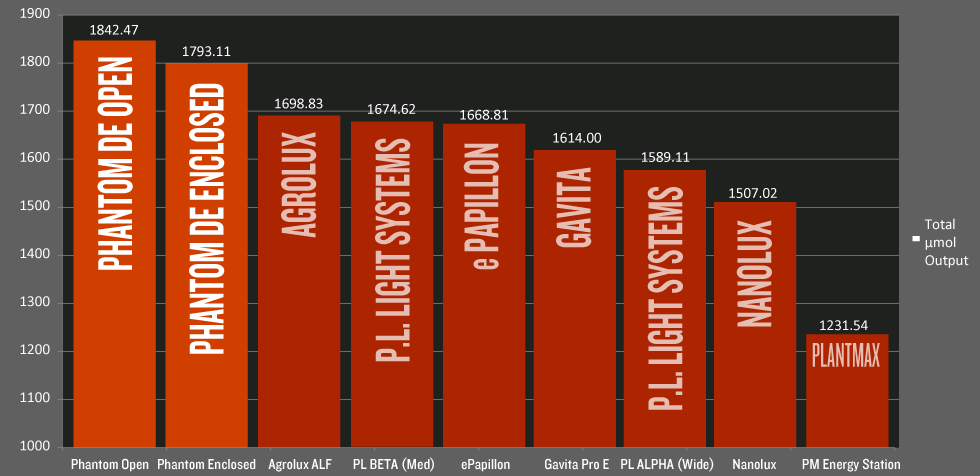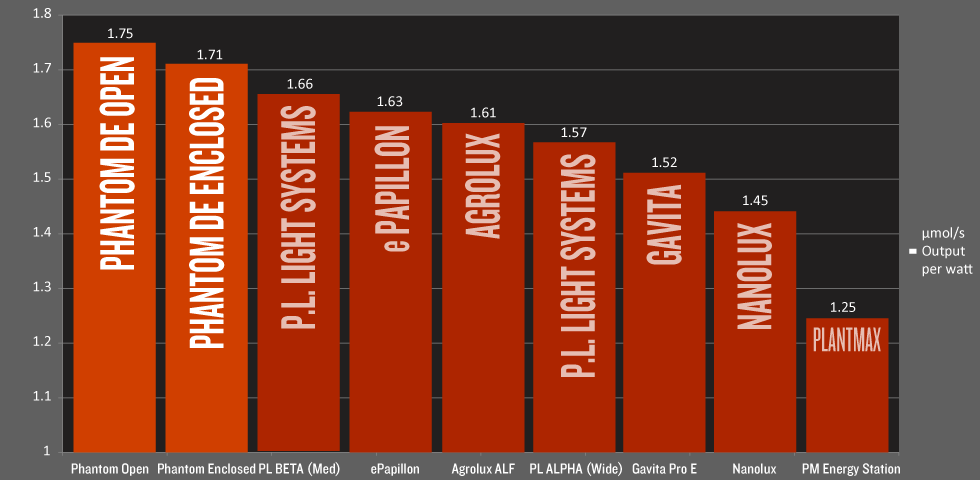The Phantom DE Systems consistently outperform the competition on every level!

Goniophotometer
These test results show that the Phantom systems have now been scientifically proven to deliver higher PAR than the other popular systems tested. The Phantoms have also been confirmed to be more efficient, require fewer fixtures to deliver desired light levels, and as a result are more cost-efficient than the other six fixtures in the testing group.
All testing was conducted on commercially available luminaires ("commercially available" is used here to indicate units chosen at random from retailers' stock to assure that they represented off-the-shelf quality and were not modified to enhance performance for testing).
Click here for a printable PDF version of the test results
For further information on ITL Boulder, click here
For more information regarding testing procedures, click here
For further information on Phantom products, click here
Total Luminaire Efficiency

Shows how efficient a luminaire is by comparing the total rated output of a bare lamp versus what percentage actually reaches the plant canopy when the lamp is installed in a luminaire. Luminaire efficiency takes into account the effect of the luminaire on the performance of the lamp. This testing was performed using a Type C goniophotometer in conjunction with an integrating sphere and calibrated spectroradiometer, which provided very accurate calculation of photon flux, spectral power distribution, and umol/s output.
Total µmol/s Output

Shows the total amount of plant usable light or PAR being emitted by the fixture.
µmol/s Output per watt

Shows how much plant usable light or PAR is being delivered in relation to the wattage the fixture consumes (how effectively the fixture converts electricity into plant usable light or PAR).
Absolute Photometric Testing
Absolute photometry reports the actual output of the luminaire, without any scaling. This type of measurement requires careful calibration of the goniophotometer’s photo detector/amplifier system using a lumen or candela standard lamp. An absolute photometric report binds the report to the specific lamp(s) of given characteristics used and the specific ballast(s) used. This limits the value of this reporting technique, however it is very useful in troubleshooting a problem project.
Relative Photometric Testing
Relative photometry is based on scaling the light output of a lamp or set of lamps to match that of the manufacturer’s rated lumens. To obtain this scaling or multiplying factor, a determination of the bare lamp(s) output must be done. This bare lamp exploration can be accomplished using a goniophotometer to determine the light output of a given lamp/ballast combination.
The output of the lamp(s) varies depending on the ballast, age, and manufacturer of the lamp(s). Once the bare lamp(s) output has been determined a scaling factor can be obtained from the ratio of rated lumens/bare lamp(s) output. This ratio indicates the performance of specific lamps on specific ballasts. Photometry is then performed on the luminaire and the scaling factor is then applied to the luminaire candela data so the photometric report reflects data as if the lamp(s) were producing rated lumens. The advantage of relative photometry is that all data is provided at rated lamp lumens so that the industry is consistent in reporting results.
To add a bit more complexity to this issue, lamps such as fluorescent that are sensitive to ambient temperature should be tested with the ballast(s) one intends on using. Since ballasts vary in construction not only do they vary the electrical performance of the lamp(s), they also vary in the amount of heat they generate. This heat affects the operating ambient temperature inside a luminaire and therefore affects the lamp’s light output and therefore the luminaire’s efficiency. This has an important and non-trivial effect on luminaire performance and is the reason the ballast(s) manufacturer and ballast(s) catalog number should be reported on all fluorescent test reports.
Where To Buy